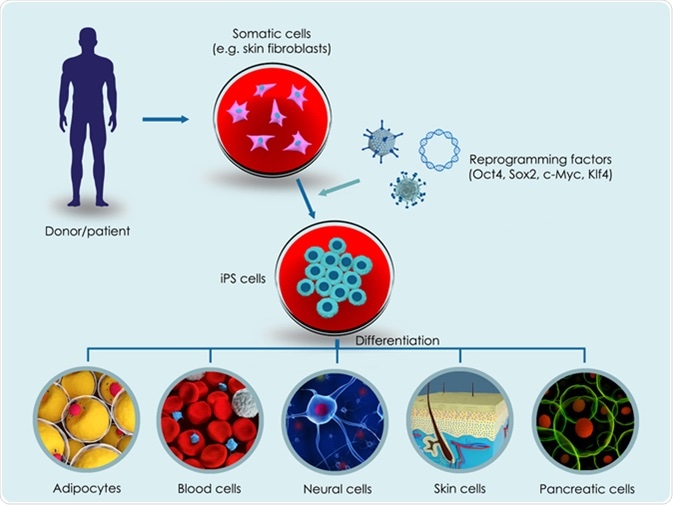

Although several defined culture conditions without feeder cells for hiPSCs have been reported, manipulation of undifferentiated hESCs and hiPSCs still remains problematic. For these reasons defined culture conditions without feeder cells are desirable. Furthermore there is unavoidable variability in using live cells as feeders, which may affect reprogramming steps. The inclusion of uncharacterized animal protein supplements makes culture conditions more complex with increased variability in nutrients and factors that contribute to cell growth and the maintenance of pluripotency. Although it is known that MEFs produce a number of secreted protein factors, they are traditionally used for ES cell culture. However, the original protocol for the derivation of hiPSCs required feeder cells and mouse embryonic fibroblasts (MEF) to provide a microenvironment for the reprogramming and the maintenance of hiPSCs. These properties make them useful for understanding the basic biology of the human body, for drug discovery and testing, and for transplantation therapies. Embryonic stem cells (ESCs) and human iPSCs (hiPSCs) can proliferate without limit and yet maintain the potential to generate derivatives of all three germ layers. Human somatic cells can be reprogrammed into induced pluripotent stem cells (iPSCs) by introduction of transcription factors such as Oct3/4, Sox2, Klf4 and c-Myc. The funders had no role in study design, data collection and analysis, decision to publish, or preparation of the manuscript.Ĭompeting interests: The authors have declared that no competing interests exist. 2265930139) from the Japanese Ministry of Education, Culture, Sports, Science and Technology to TO and SY. This is an open-access article distributed under the terms of the Creative Commons Attribution License, which permits unrestricted use, distribution, and reproduction in any medium, provided the original author and source are credited.įunding: This work was supported in part by research grants (no. Received: AugAccepted: DecemPublished: January 29, 2014Ĭopyright: © 2014 Yamasaki et al. PLoS ONE 9(1):Įditor: Zhongjun Zhou, The University of Hong Kong, Hong Kong This simple serum-free adherent monoculture system will allow us to elucidate the cell responses to growth factors under defined conditions and can eliminate the risk might be brought by undefined pathogens.Ĭitation: Yamasaki S, Taguchi Y, Shimamoto A, Mukasa H, Tahara H, Okamoto T (2014) Generation of Human Induced Pluripotent Stem (iPS) Cells in Serum- and Feeder-Free Defined Culture and TGF-β1 Regulation of Pluripotency.

This result clearly confirmed that hiPSCs cultured in hESF9 medium absolutely required TGF-β1 to maintain pluripotency. Furthermore, over short time periods the hiPSCs cultured in hESF9 or hESF9T exhibited similar morphology, but hiPSCs maintained in hESF9 could not survive beyond 30 passages.

However, increasing doses of TGF-β1 suppressed the growth rate of hiPSCs cultured under the defined conditions. In this study, we found that TGF-β1 increased the expression levels of pluripotency markers in a dose-dependent manner. These hiPSCs retained the property of self-renewal as evaluated by the expression of self-renewal marker genes and proteins, morphology, cell growth rates, and pluripotency evaluated by differentiation into derivatives of all three primary germ layers in vitro and in vivo. In this study, we successfully generated hiPSCs from human dental pulp cells (DPCs) using Yamanaka's factors ( Oct3/4, Sox2, Klf4, and c-Myc) with retroviral vectors in serum- and feeder-free defined culture conditions. In addition, there is no consensus as to the optimal formulation, or the nature of the cytokine requirements of the cells to promote their self-renewal and inhibit their differentiation. Use of culture medium containing undefined or unknown components has limited the development of applications for pluripotent cells because of the relative lack of knowledge regarding cell responses to differentiating growth factors.

Human Embryonic Stem cells (hESCs) and human induced Pluripotent Stem cells (hiPSCs) are commonly maintained on inactivated mouse embryonic fibroblast as feeder cells in medium supplemented with FBS or proprietary replacements.


 0 kommentar(er)
0 kommentar(er)
